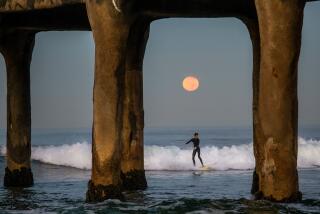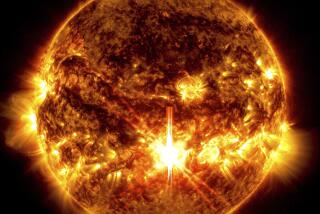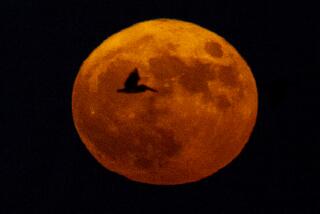The Great American Eclipse: How to watch it safely

A solar eclipse will be visible across a wide swath of the U.S. on Aug. 21. Here’s how to watch it safely.
A total solar eclipse will sweep across the United States on Aug. 21 from Oregon to South Carolina, causing darkness to fall along a 70-mile-wide stretch of land.
But even if you can’t make it into this path of totality, where the moon will entirely obscure the face of the sun, you can still enjoy a celestial show. A partial eclipse — where the moon appears to take a bite out of the sun — will be visible in all of the lower 48 states.
Eclipses pose a bit of a dilemma for sky watchers. Aside from the few minutes of totality, when the moon completely covers the sun, you can’t actually look at the sun directly without hurting your eyes.
Dr. Christopher Quinn, president of the American Optometric Assn., explained that your eyes don’t just absorb the light of the sun. Instead, they concentrate it — focusing it on the light-sensitive tissue at the back of the eye known as the retina.
The cells of the retina are not designed to handle the light intensity that comes from staring directly at the sun.
“It basically coagulates the retina in the center part of the eye — almost cooking it,” he said.
And once the damage is done, it cannot be repaired.
A pair of sunglasses, or even five, won’t offer your eyes the protection they need during most stages of an eclipse.
But don’t despair. If you want to see the eclipse, you’ve got plenty of options.
Eclipse glasses and hand-held solar viewers
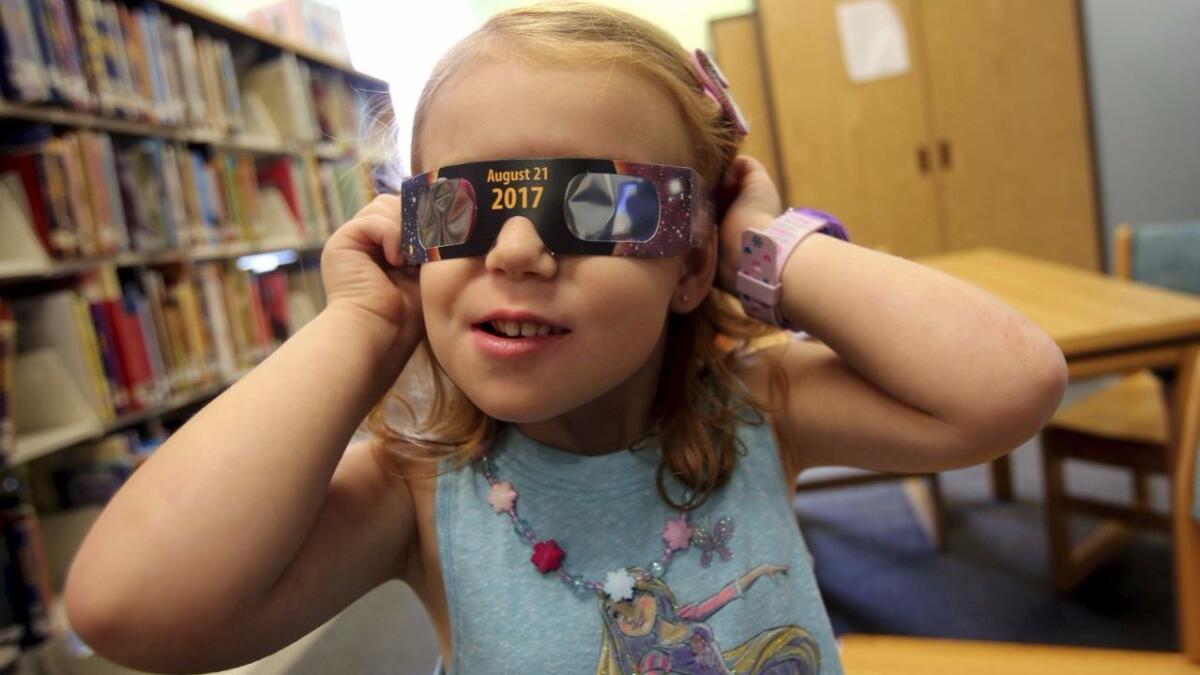
If you want to look directly at the sun during the partial phases of an eclipse, you’ll need a pair of eclipse glasses or a hand-held solar viewer to do it safely. These are usually cardboard or paper glasses that are equipped with specialty solar filters that block out more than 99% percent of the sun’s light.
A safe solar filter will produce a view of the sun that is about as bright as the full moon surrounded by a dark sky, according to the American Astronomical Society (AAS).
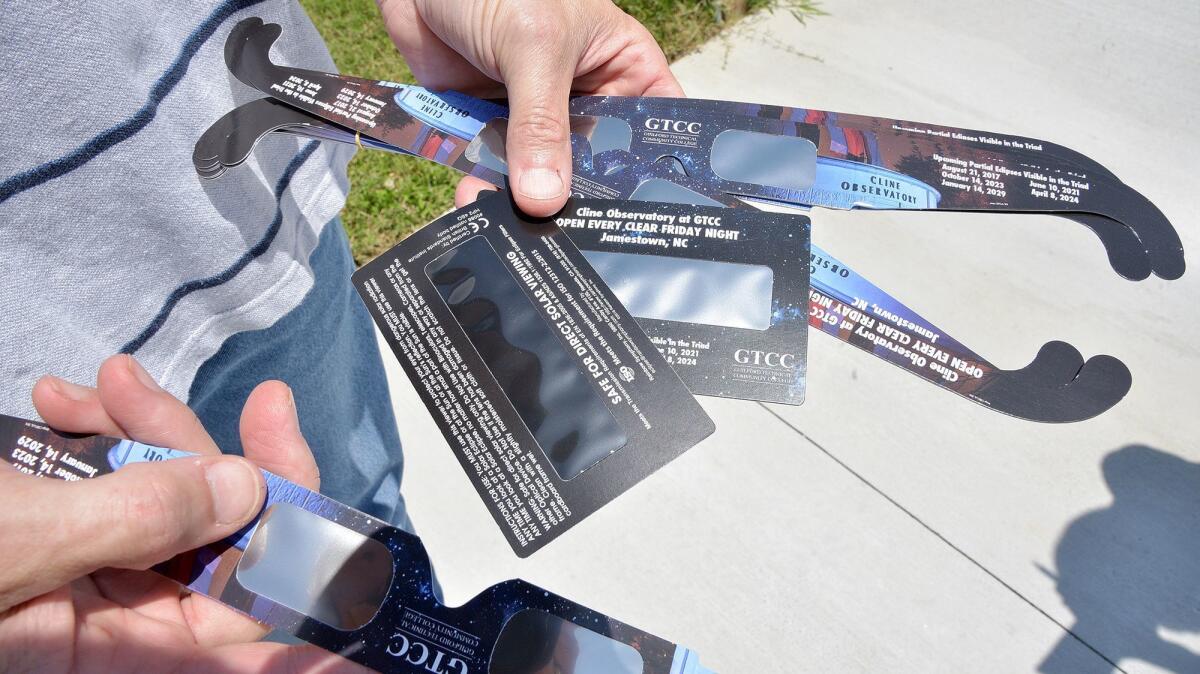
To use eclipse glasses, experts recommend putting them over your eyes (or over your regular glasses if you have them) before looking at the sun. When you are done observing the eclipse, look away from the sun before taking the glasses off.
People in the path of totality can look at the sun without solar glasses, but only when the sun is fully obscured by the moon. When you notice that darkness has descended, it is safe to remove your solar glasses. As soon as totality is over however, the glasses need to go back on.
Buyer beware
In early August, the AAS issued a warning that some eclipse glasses and hand-held solar viewers currently on the market do not meet safety standards set by the International Organization for Standardization.
To help consumers determine which eclipse glasses and solar viewers are truly safe, the AAS put together a list of reputable vendors.
What to do if you already have a pair of eclipse glasses? If you got them from a planetarium, science museum or from an amateur astronomer, they are probably safe to use.
If you are not sure if yours are safe, you might quickly glance at the sun with the solar viewer held up to your eyes. If the sun looks uncomfortably bright, or out of focus, you’ll want to replace your viewer before the big day.
Using binoculars and telescopes
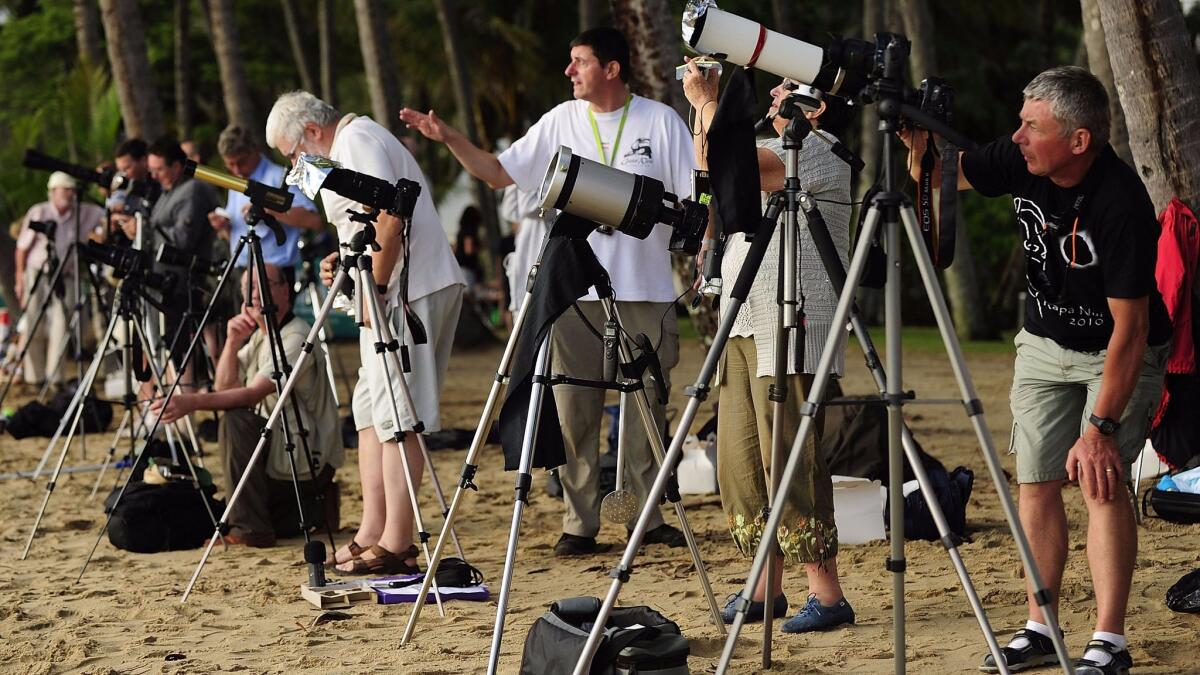
If looking at the sun with the naked eye is a bad idea, looking at the unfiltered sun through binoculars or a telescope is even worse. These instruments concentrate the sun’s intense light, making it even more dangerous to peer at the solar face through them.
That’s no reason to give up on getting a closer view of the sun during an eclipse, however. Just make sure that any telescope or binoculars you plan to use on Aug. 21 are equipped with a solar filter that goes on the front of the instrument.
A solar filter that goes over the eyepiece is of no help to you here. It will likely get burned by the heat of the concentrated rays, followed by your eyes. (Yikes!)
The editors of Sky & Telescope magazine have put together a list of companies that make safe solar filters that can be safely used with binoculars and telescopes.
Pinhole projection
You can also observe a partial eclipse without looking at the sun at all using a process called pinhole projection.
To use this method, pass sunlight through a small opening and then project it on another surface.
This could be as easy as punching a small hole in an index card and allowing the sun’s light to stream through it onto another surface — like the ground, a wall or another card. If you do this during a partial eclipse, the projected image will reveal the sun’s crescent shape.
Easier yet, turn your back to the sun, make a grid with your fingers and then look at your shadow. The sunlight passing through the small spaces between your fingers will create a repeated pattern of crescent shapes on the ground.
Sunlight falling between overlapping leaves will project a similar dappled image of the partially eclipsed sun on the ground.
If you want to be a bit more serious about your pinhole projecting, NASA’s Jet Propulsion Laboratory has a very simple DIY pinhole camera project that you can try. All it requires are two pieces of paper, some tinfoil and some tape.
However you choose to see the full or partial eclipse on Monday, Aug. 21, I wish you happy, and very safe, viewing!
Do you love science? I do! Follow me @DeborahNetburn and “like” Los Angeles Times Science & Health on Facebook.
MORE IN SCIENCE
These eclipse addicts go to great lengths, again and again, to stand in awe of the heavens
Will the Great American Eclipse make animals act strangely? Science says yes
Parades, parties and port-a-potties: Eclipse mania is taking hold from coast to coast
